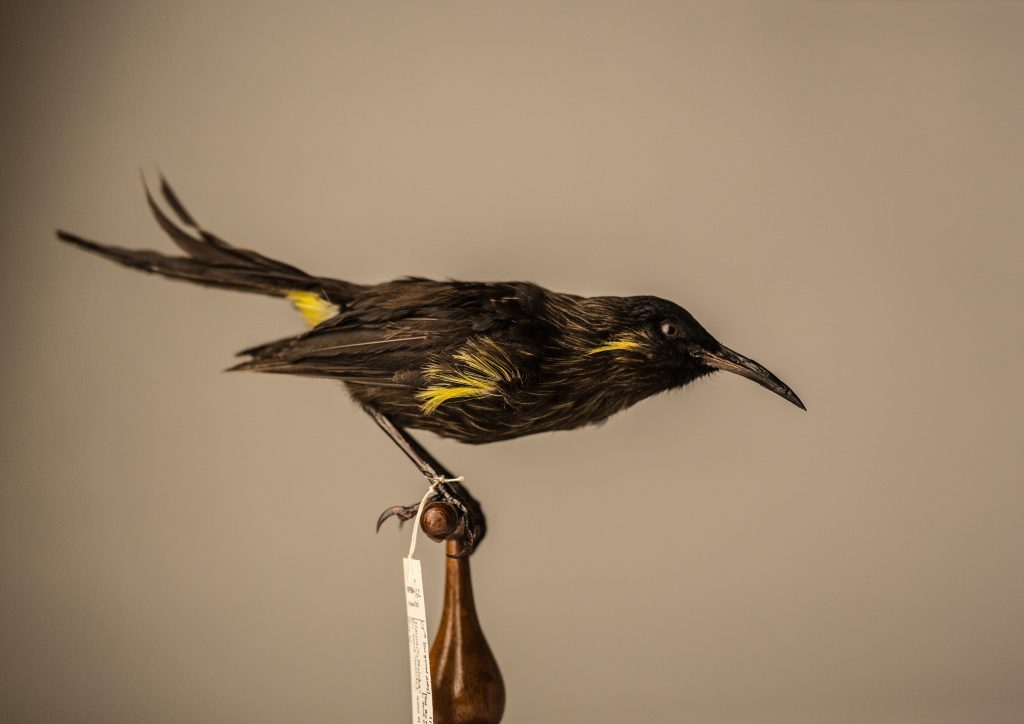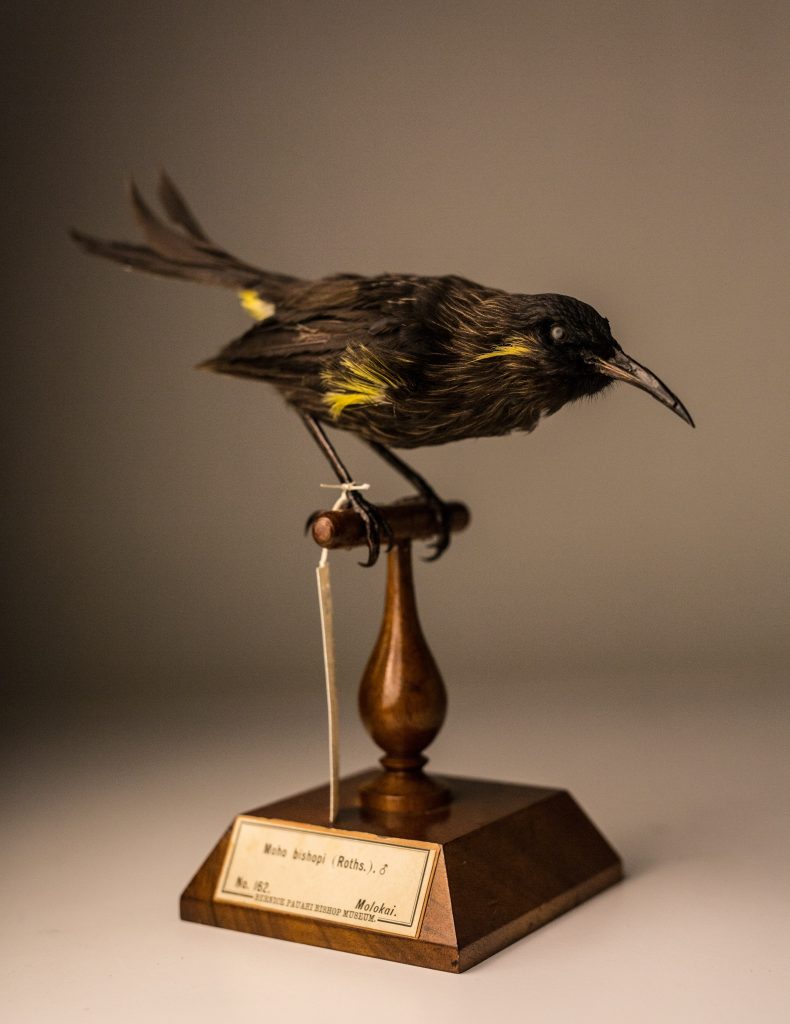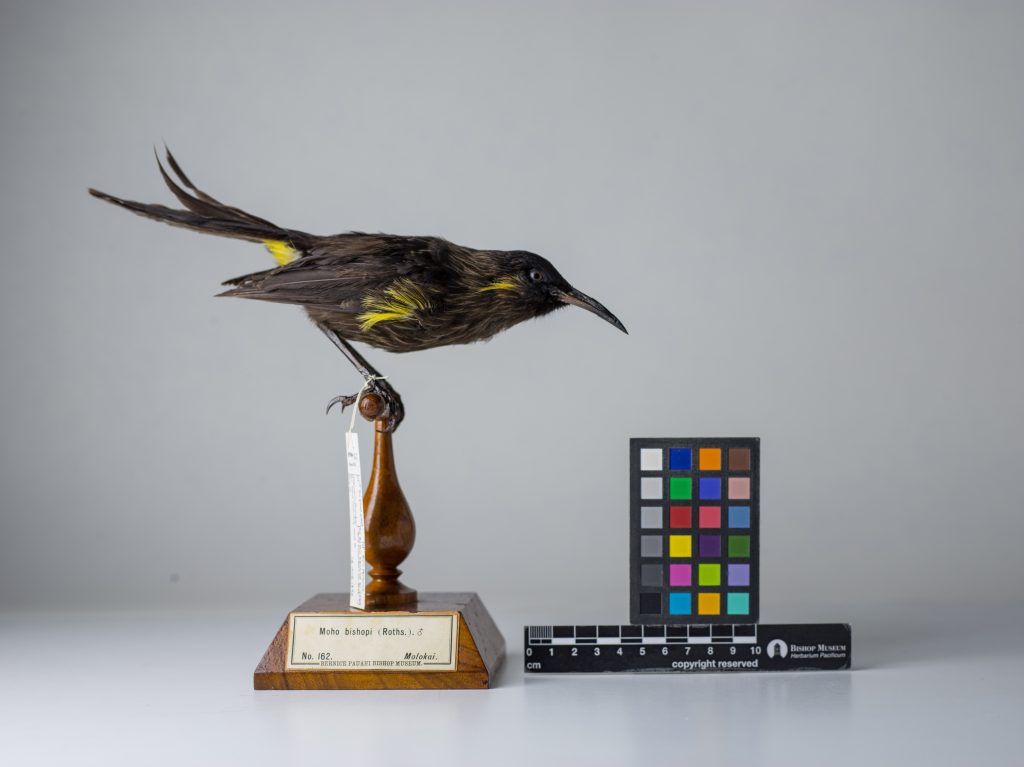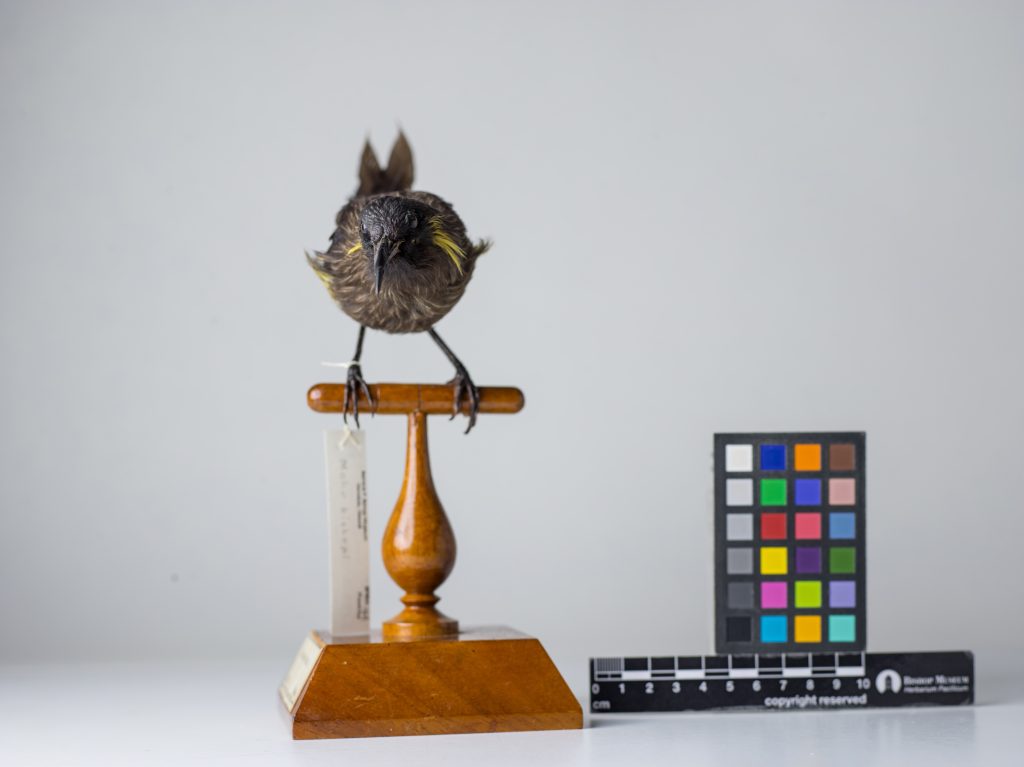Bishop’s ‘Ō‘ō

Names
- ʻŌlelo Hawaiʻi: Bishop’s ‘ō ‘ō
- Scientific: Moho bishopi
Conservation Status
- Extinct
- State Recognized as Endemic
- NatureServe Heritage Rank GH—Possibly Extinct
- IUCN Red List Ranking—Extinct
- Revised Recovery Plan for Hawaiian Forest Birds—USFWS 2006
Species Information
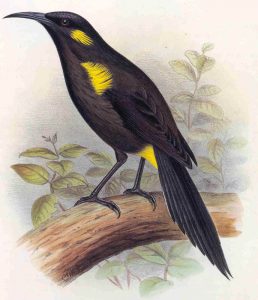
Bishop’s ʻōʻō. Picture: Rothschild Collection
Known only from Moloka‘i, Bishop’s ‘ō‘ō is a large, noisy honeyeater (Family: Meliphagidae). This striking species is black with yellow ear patches, under tail coverts (small feather that lie beneath and cover the beses of the tail feathers), and maxillary tufts. Both sexes are of similar appearance. The bird’s vocalizations have been described as varied and “unlike any other native bird.” Bishop’s ‘ō‘ō appears to be primarily nectivorous, preferring lobelia (Campanulaceae) flowers. Little is known about this species’ life history and nothing is known about its nesting biology
Distribution
Unknown. Probably extinct. Historic range of Bishop’s ‘ō‘ō likely included all native forests of eastern Moloka‘i. Subfossils suggest it may have occurred on Maui. Sightings in the 1980s of a possible ‘ō‘ō species on Maui were never confirmed.
Habitat
Unknown. Bishop’s ‘ō‘ō occupied the montane forests of eastern Moloka‘i. The areas where the species was last observed are managed by the State of Hawai‘i as a Natural Area Reserve or by private conservation entities (e.g., The Nature Conservancy) as a Natural Area Partnership Preserve.
Threats
Unknown. However, Bishop’s ‘ō‘ō likely were susceptible to the same factors that threaten other native Hawaiian forest birds including: loss and degradation of habitat, predation by introduced mammals, and disease. For Bishop’s ‘ō‘ō populations, the following likely were of particular concern:
- Disease. The fact that no habitat above 1,250 meters (4,100 feet) occurs on Moloka‘i suggests disease may have played an important role in the species’ decline.
- Hunting. Bishop’s ‘ō‘ō were exploited for their feathers, which were used in Hawaiian featherwork articles such as capes and kāhili (feather standard). Exploitation may have increased with the introduction of firearms by Europeans.
Photos
Additional Resources
For more information and references visit the DLNR State Wildlife Action Plan factsheets. DOFAWʻs species pages and State Wildlife Action Plan fact sheets are provided for general information and are not meant to be a citable, original source of data. If you are a student, researcher, or writer looking for a citable source, please explore the references below or find other original data sources, rather than citing these webpages. The references below were provided by the authors of the State Wildlife Action Plan fact sheets at the time of drafting:
- IUCN Red List of Threatened Species. 2015. Version 2014.3. Available at: www.iucnredlist.org. (Accessed May 2015).
- Scott JM, Mountainspring S, Ramsey FL, Kepler CB. 1986. Forest bird communities of the Hawaiian islands: their dynamics, ecology and conservation. Lawrence, (KS): Cooper Ornithological Society.
- Sykes PW, Kepler AK, Kepler CB, Scott JM. 2000. Kaua‘i o‘o (Moho braccatus), O‘ahu ‘o‘o (Moho apicalis), Bishop’s ‘o‘o (Moho bishopi), Hawai‘i ‘o‘o (Moho nobilis), and kioea (Chaetoptila angustipluma). In The Birds of North America, No. 535 (Poole A, Gill F, editors.). Philadelphia, (PA): The Academy of Natural Sciences; and Washington DC: The American Ornithologists’ Union.
- U.S. Fish and Wildlife Service. 2006. Revised Recovery plan for Hawaiian forest birds. Portland, (OR): U.S. Fish and Wildlife Service.

